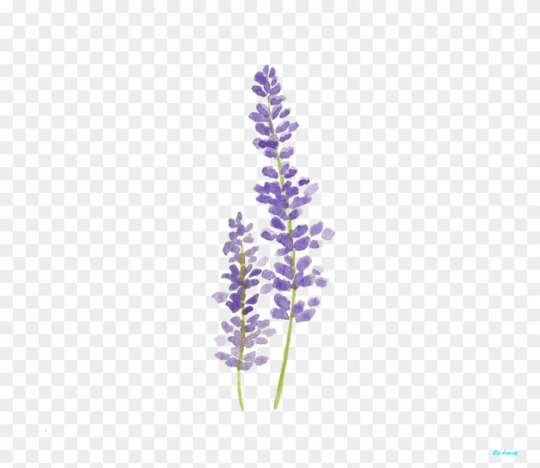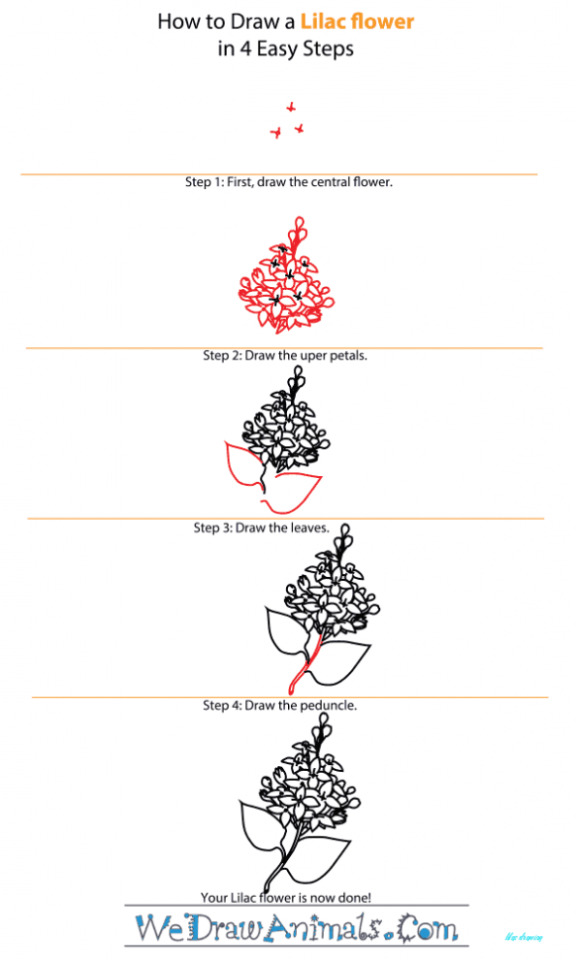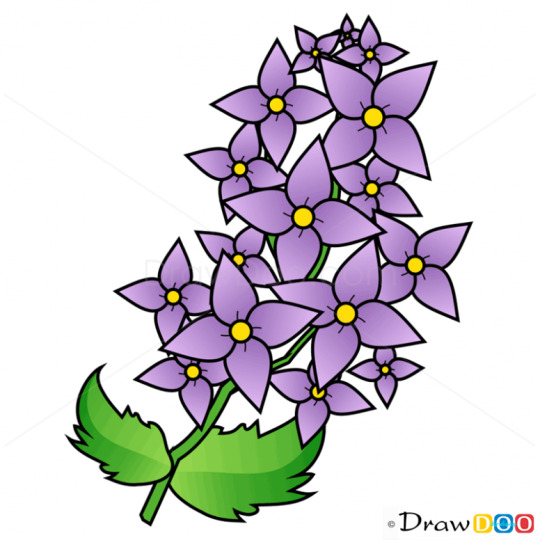#sciencemadesimple
Explore tagged Tumblr posts
Text
youtube
#ChemistrySolutions#ScienceInAction#MoleculesAtWork#SolventAndSolute#SolutionScience#ChemicalMixtures#LearnChemistry#HomogeneousMixtures#ChemistryExplained#SolutionsInChemistry#MolarityMatters#ScienceMadeSimple#ChemicalReactions#ExploringSolutions#SolvingChemistry#Youtube
0 notes
Text
Greetings and Welcome!
Greetings!
Thank you for stopping by the blog! The purpose of the page is to get people talking to both myself and each other and puzzling out all the interesting things about the natural world they see in the news.
I'm a Bachelor of Science (Biology) and I very firmly believe that science and the natural world are for everyone to appreciate and understand.
If you see something in the news, or on your feed, and think 'Hm, wonder what that's about', firstly I would encourage you to find out! Secondly, you can always ask me!
I'll do my best to answer your questions. Even the non-biology ones.
Feel free to hit me via the email on the blog, or on any of the social media linked at the bottom of the page. Happy Sciencing!
1 note
·
View note
Photo

Do you know why soft drinks have a tangy flavour? #dailysciencefacts #dailyscience #scienceineverydaylife #sciencefactoftheday #Generalscience #generalknowledge #funwithchemistry #sciencemadesimple #funwithscience #sciencegyan #scienceknowsbest #scienceknowledgepower #knowledgequotes #scienceeveryday #funfacts #thingstoknow #whyscience www.sciencegyan.com YouTube.com/sciencegyan https://www.instagram.com/p/BtJTpr4AMTI/?utm_source=ig_tumblr_share&igshid=mkcpoaj859lc
#dailysciencefacts#dailyscience#scienceineverydaylife#sciencefactoftheday#generalscience#generalknowledge#funwithchemistry#sciencemadesimple#funwithscience#sciencegyan#scienceknowsbest#scienceknowledgepower#knowledgequotes#scienceeveryday#funfacts#thingstoknow#whyscience
0 notes
Text
25 Things That You Never Expect On Lilac Drawing | Lilac Drawing
Waiting for anniversary of them was a appropriate affectation set up by their abutting family, forth with their gowns, sashes and tiaras – article they anticipation they ability not get this year.
The moment was added appropriate for Angel Morgan from Lewis and Clark High School. Her mother was additionally a Lilac Princess, and got the befalling to put the aforementioned bandage and adornment on her daughter.
The speeches brought abounding to tears, including Lilac President Dan Ver Heul, who acclaimed that he’s absolutely animated they didn’t accept to accept a Queen this year accustomed the ability of anniversary Princess’s speech.
It may not accept been the day anniversary Angel had dreamed of, but this Royal Court has connected to persevere through anniversary challenge, actual absolute during one of our region’s best aggravating times.
25 Things That You Never Expect On Lilac Drawing | Lilac Drawing – lilac drawing | Welcome in order to the blog, with this moment I’m going to show you in relation to keyword. And after this, this is the very first impression:

Alisk | lilac drawing
How about impression above? will be that amazing???. if you feel therefore, I’l l demonstrate some graphic again underneath:
So, if you would like get all of these incredible photos regarding (25 Things That You Never Expect On Lilac Drawing | Lilac Drawing), just click save link to download the photos to your pc. They are all set for obtain, if you love and want to get it, just click save logo on the page, and it’ll be directly downloaded to your laptop computer.} As a final point if you wish to grab new and recent graphic related to (25 Things That You Never Expect On Lilac Drawing | Lilac Drawing), please follow us on google plus or bookmark the site, we attempt our best to provide regular up grade with fresh and new graphics. Hope you love keeping right here. For some up-dates and latest information about (25 Things That You Never Expect On Lilac Drawing | Lilac Drawing) pics, please kindly follow us on twitter, path, Instagram and google plus, or you mark this page on book mark area, We try to provide you with up-date periodically with fresh and new images, love your surfing, and find the ideal for you.
Here you are at our site, articleabove (25 Things That You Never Expect On Lilac Drawing | Lilac Drawing) published . Nowadays we’re delighted to announce that we have discovered a veryinteresting topicto be reviewed, namely (25 Things That You Never Expect On Lilac Drawing | Lilac Drawing) Most people looking for info about(25 Things That You Never Expect On Lilac Drawing | Lilac Drawing) and of course one of them is you, is not it?
How to Draw Lilac, Flowers – lilac drawing | lilac drawing

Lilac Drawings Vector Images (over 25,25) – lilac drawing | lilac drawing

Fabulous Watercolor Works by Elena Limkina | Lilac tattoo .. | lilac drawing

How to draw lilac step by step | ARCMEL | lilac drawing

Lilac watercolor illustration on Behance – lilac drawing | lilac drawing

Learn How to Draw an Egyptian Goose (Birds) Step by Step .. | lilac drawing

Branch with outline Lilac or Syringa flower bunch and ornate. | lilac drawing

How to Draw a Lilac in 25 Steps (With images) | Flower sketches .. | lilac drawing

Sprig Sciencemadesimple Info This Site Contains All – Simple Lilac .. | lilac drawing

Honoring the legacy of Luther Burbank―a new exhibition of .. | lilac drawing

Branch Of Lilac Flowers. Vector Illustration. Stock Vector .. | lilac drawing

How to Draw Lavender in 25 Easy Steps – The Illustrai – lilac drawing | lilac drawing

The happiness of your life depends on the quality of your thoughts – lilac drawing | lilac drawing

ドイツ、バルト海、桟橋、朝、木の橋 iPhoneの壁紙 | 640×1136 iPhone 5 (5S) (5C .. | lilac drawing

Watercolor Lilac Flowers Painting Demonstration – YouTube – lilac drawing | lilac drawing

Lilac Drawing Images, Stock Photos & Vectors | Shutterstock – lilac drawing | lilac drawing

Lilac Flower Drawing Illustration Black And White With Line Art On .. | lilac drawing

Lilac Line Drawing – lilac drawing | lilac drawing

How to Draw a Lilac Flower – lilac drawing | lilac drawing

How to draw a lilac – lilac drawing | lilac drawing

Flowers Stock Art Illustrations – Douglas Schneider .. | lilac drawing

How to Draw Lilac, Flowers – lilac drawing | lilac drawing

How To Draw Lilac Flower Coloring Page : Coloring Sky – lilac drawing | lilac drawing

Purple Watercolor Flower clipart – Drawing, Flower, Illustration .. | lilac drawing
from Wallpaper Nifty https://www.flowernifty.com/25-things-that-you-never-expect-on-lilac-drawing-lilac-drawing/
0 notes
Photo

#repost @famelabitalia ・・・ Prossima fermata #famelabitalia ➡️ 12-13-14 aprile, masterclass a #perugia 🗓 uno dei formatori sarà David Price di @scimadesimple #famelab #fli19 #sciencemadesimple #busking #talkingscience #science #instascience https://ift.tt/2FITo59
0 notes
Text
deep dive: unicorn of the sea
Narwhals - a cross between a seal, a unicorn, and a sausage.

Fast Stats:
Common Name: Narwhal.
Inuktitut Name: Tuugaalik
Scientific Name: Monodon Monoceros (meaning: one tooth, one horn)
Family: Monodontidae
Conservation Status: Near Threatened
Habitat: Open ocean, inlets, and fjords around Canada, Greenland, Norway, and Russia.
Length: 3.95-5.5m excluding tusk.
Weight: Up to 940kg.
The Lowdown:
The narwhal is a medium-sized, non-toothed whale that doesn’t have a dorsal fin. It has a sausage-shaped body, short blunt flippers and tail flukes that look like they were put on backward. Most importantly it is recognized by its long spiral tusk that can grow to be half the length of the narwhal.
It is part of the infraorder cetacea. Cetacea are marine mammals the also include other whales, dolphins, and porpoises. Their shared characteristics are a streamline hairless body, no hindlimbs, a horizontal tail fin, and a blowhole on top of the head for breathing.
The narwhal is one of three cetacaens endemic to Arctic waters – the others are the Beluga whale and the Bowhead whale.
It is the only cetacea to have a long spiraled tusk – this is a feature mostly seen on the males of the species. However, females have been known to grow a tusk of their own, and in some cases, both sexes have grown two tusks.
The tusk is formed by the outgrowing of the upper left-hand tooth through the lip of the narwhal in an anti-clockwise spiral pattern.
Research suggests that the tusk is a sensory organ with as many as 10 million nerve-endings present.
It thought to be used to detect conditions such as temperature, sound, motion, barometric pressure, water salinity, the presence of mates, and the presence of fish.
The tusk is used to hunt fish, a behavior observed by the WWF in Canada, they use the tusk to stun fish and then suck them into their mouths.
The tusk also helps with sound production and reception, like a long ivory antenna.
They are born a very dark grey and gain their characteristic mottled grey on white pattern as they age with males eventually becoming entirely white. They also have a very thick layer of blubber/layered fat (10cm) to insulate against the freezing cold waters of the Arctic and to store energy.
Narwhals live on average up to 50 years but have been recorded to be as old as 115 years old!
Cultural Importance:
Narwhals are important mammals for the Inuit people in Canada and local, native hunters in Greenland.
The act of hunting narwhals has for the native Arctic communities important cultural, social, nutritional and financial ties for communities and families.
Currently, the only hunting permitted in Canada and Greenland is by native Canadian Inuit peoples and traditional hunters in Greenland for subsistence purposes only - this translates to roughly 5 narwhals a year per permit holder.
Hunting allows for the harvest of all parts of the narwhal from the bones all the way to the skin.
Muktuk, the skin and fat layer of the Narwhal is considered a delicacy and is a good source of vitamin C and D which may be lacking otherwise in native diets.
In Greenland it is sold commercially to fish factories and in Canada, it is one of the products native Innuit communities can sell to other communities.
References – The Good Stuff:
Moore SE, Reeves RR (2018) Tracking arctic marine mammal resilience in an era of rapid ecosystem alteration. PLoS Biol 16(10): e2006708. https://doi.org/10.1371/journal.pbio.2006708
Shadbolt, T., Cooper, E.W.T & Ewins, P.J. 2015. BREAKING THE ICE: International Trade in Narwhals, in the Context of a Changing Arctic. TRAFFIC and WWF. Toronto, Ontario, Canada.
https://www.worldwildlife.org/species/narwhal
https://en.wikipedia.org/wiki/Narwhal
https://us.whales.org/whales-dolphins/species-guide/narwhal/
https://www.abeautiful.world/stories/save-the-narwhals/
https://oceana.org/marine-life/marine-mammals/narwhal
http://www.wwf.ca/conservation/arctic/wildlife/narwhal/
Image Credit:
Banner: https://www.tributemedia.com/blog/tribute-media-changes-name-to-corey-media
0 notes
Photo

What is "Shark POD"? #dailysciencefacts #dailyscience #scienceineverydaylife #sciencefactoftheday #Generalscience #generalknowledge #physicsfun #sciencemadesimple #funwithscience #sciencegyan #scienceknowsbest #scienceknowledgepower #knowledgequotes #scienceeveryday #funfacts www.sciencegyan.com https://www.instagram.com/p/BtFVd04g-n8/?utm_source=ig_tumblr_share&igshid=1751oyberd8yj
#dailysciencefacts#dailyscience#scienceineverydaylife#sciencefactoftheday#generalscience#generalknowledge#physicsfun#sciencemadesimple#funwithscience#sciencegyan#scienceknowsbest#scienceknowledgepower#knowledgequotes#scienceeveryday#funfacts
0 notes
Photo

Energy and power are different #dailysciencefacts #dailyscience #scienceineverydaylife #sciencefactoftheday #Generalscience #generalknowledge #energyandpower #physicsfun #sciencemadesimple #funwithscience #sciencegyan #scienceknowsbest #scienceknowledgepower #knowledgequotes www.sciencegyan.com https://www.instagram.com/p/Bs9-G8JgCMW/?utm_source=ig_tumblr_share&igshid=1m0vow2g4x7q0
#dailysciencefacts#dailyscience#scienceineverydaylife#sciencefactoftheday#generalscience#generalknowledge#energyandpower#physicsfun#sciencemadesimple#funwithscience#sciencegyan#scienceknowsbest#scienceknowledgepower#knowledgequotes
0 notes
Text
deep dive: unicorn of the sea
Narwhals - the bad news, the worse news, and the good news.

The Bad News (sorry):
Anthropogenic threats to narwhal populations include oil and gas development in the Arctic region, shipping, commercial fisheries, industrial development, tourism, noise pollution from all of these activities, and climate change.
Other threats include disease and predation, changes to prey sources, alteration and destruction of habitats and ice entrapments.
Oil and Gas Developments
Vessels supporting oil and gas developments in narwhal habitats mean more shipping in sensitive areas such as nursery locations and migratory routes. An increase in shipping in these areas means an increase in shipping noise which masks a lot of marine mammal communications, including that of the narwhals.
Increased shipping also increases the risk of collisions with narwhals and other marine mammals.
These developments also lead to a greater risk of oil or chemical spills in the habitat of these mammals from either ships or rigs. This, in turn, leads to a greater risk of exposure to toxic products and wastes.
Ocean Noise
Shipping movements, industrial extraction as seen in oil and gas development, and military activities all produce underwater noise pollution.
Whales, including narwhals, rely on sound to communicate, hunt, and navigate.
Increased noise pollution due to increased human activities affects their ability to find food, find mates, navigate waterways, avoid predators and care for their young.
The Worse News (really sorry):
Climate Change
Narwhals rely on the sea ice during the changing seasons for their existence, and as such, they are threatened by and impacted by climate change.
Sea ice is important to narwhals in all facets of life from feeding, taking refuge, breeding and migrating.
Thousands of years of evolution have led to the adaptations that make the narwhal successful in their current environment, which is under and around the sea ice.
The Arctic sea ice has been changing quickly in thickness, the amount of space covered and the amount of time it covers the sea. The sea ice is shrinking and it is doing so far too quickly for narwhals to adapt to.
As it continues to shrink at an alarming rate, there is a good chance that the areas previously closed to human development will open and see an increase in activity, causing disturbances to the narwhal populations, their habitats and altering current hunting pressures, prey abundance, and availability.
Increased activity for industry leads the threats discussed above; chemical spills, noise pollution and alteration/destruction of their habitats.
Shifts in the patterns and timing of the sea ice formation and break up could affect the timing of migrations, the length of feeding, the fecundity, and survivorship of the species.
The changes in sea ice have also lead to ice entrapment events – this is where the ice holes that allow the narwhals to breathe during deep dives suddenly ice over either due to a lack of movement of the sea ice or a sudden drop in temperature. This leaves the narwhal stranded without a place to breath and often usually results in death.
Ice entrapments are a natural occurrence and cause of mortality for narwhals, however, the increase in these events occurring is linked to the change in sea ice caused by climate change.
Changes in sea ice may also result in changes of migratory patterns for prey species of narwhals – for example, they may arrive at their wintering feeding grounds after prey species have already left.
Due to the large geographic distribution of populations, the actual effects of climate change will be different between populations and how they adapt will also be different, some populations may have a harder time adapting than others.
These negative effects not only impact the narwhal populations but also the native Arctic communities that co-exist with and/or depend on the narwhals for survival.
An anecdotal by-product of climate change has been observed by Innuit communities in Repulse Bay, Canada – an increased number of orcas have been spotted in the area and the local communities are concerned that the populations of narwhal may be over predated due to the lack of sea ice protecting the narwhals.
The Good News (yay!):
Hunting restrictions that have been placed on who can hunt narwhals are keeping hunting levels at sustainable levels.
Europe and the United States have extra restrictions on the importation of narwhal parts and by-products on top of those already laid out in the Convention on International Trade in Endangered Species of Wild Fauna and Flora (CITES).
Europe has heavy restrictions on the import and trade of narwhal parts and by-products – the European Union Wildlife Trade Regulation (EU WTR) treats narwhals as an Annex A species.
The United States Marine Mammal Protection Act (US MMPA) has prohibited the import of narwhal parts since 1972.
Importation of narwhals parts into Europe and the United States is allowed only in very specific circumstances and with the issue of permits.
Conservation and protection efforts for these creatures are difficult due to their secretive lives underneath the sea ice.
To help conservation and protection efforts, more information is required. The WWF for example is attaching satellite tags to narwhals to monitor their migratory routes and feeding habitats.
Environmental groups are lobbying hard to prevent oil and gas development in the Bafin Bay area, which is an important habitat for narwhals but is also slowly becoming unfrozen and prime for oil and gas development. The WWF is one such group as well as Wildlife Defenders and other local and native groups.
What Can I Do?
You can adopt a narwhal through the WWF.
You can join a reputable organisation and help the fight for the planet.
You can donate money.
Or, you can donate time. Spread the word about these amazing species!
References – The Good Stuff:
Moore SE, Reeves RR (2018) Tracking arctic marine mammal resilience in an era of rapid ecosystem alteration. PLoS Biol 16(10): e2006708. https://doi.org/10.1371/journal.pbio.2006708
Shadbolt, T., Cooper, E.W.T & Ewins, P.J. 2015. BREAKING THE ICE: International Trade in Narwhals, in the Context of a Changing Arctic. TRAFFIC and WWF. Toronto, Ontario, Canada.
https://www.worldwildlife.org/species/narwhal
https://en.wikipedia.org/wiki/Narwhal
https://us.whales.org/whales-dolphins/species-guide/narwhal/
https://www.abeautiful.world/stories/save-the-narwhals/
https://oceana.org/marine-life/marine-mammals/narwhal
http://www.wwf.ca/conservation/arctic/wildlife/narwhal/
Image Credit
Banner: https://www.tributemedia.com/blog/tribute-media-changes-name-to-corey-media
0 notes
Text
deep dive: unicorn of the sea
Narwhals - where they live, what they eat, and who they love.

Home Sweet Home:
Narwhals spend most of their lives in Arctic waters off the coasts of Greenland and Canada primarily with migrations to Norway, Alaska, Iceland, and Russia.
Populations of Narwhals are split into three major geographical locations, based on the summering locations of the three populations. These include the Baffin Bay population, the Northern Hudson Bay population and the East Greenland population.
Home Sweet Home (Cont.):
Narwhals are a migratory species with distinct summering waters and wintering waters – think of them as both summer and winter vacation spots.
In winter they are associated with areas of dense-packed sea ice and limited open water; here they do most of their hunting, eating, and mating.
In summer they spend their time in the coastal, ice-free fjords and archipelagos of northern Canada and North Greenland raising and birthing their young.
They constantly return to these spots each season. This behaviour indicates that they have a high site fidelity based on habit rather than food.
Hunter/Hunted:
Narwhals are deep-sea hunters with dives recorded to last up to 25 minutes and reaching at their deepest 1,750m.
Narwhals have amazing physical adaptations that allow for this sort of diving including rib cages that can compress under the high pressure of a deep dive, muscles that are capable of carrying extra oxygen, and the ability to shut off blood flow from non-essential body parts and organs.
The Narwhal diet consists of Greenland halibut, polar cod, Arctic cod, hook arm squid, and other species of pelagic fish and benthos prey.
The major predators of the narwhal are orca (killer whale), polar bears and humans.
Narwhals have developed strategies for avoiding orca, including the use of pack ice during the winter season - this does open them to attack from polar bears who stake out the breathing holes in the ice for juvenile narwhals.
Other strategies used by narwhals to avoid orca include hiding in broken ice fields, ceasing vocalization, reducing their movement, breathing quietly, forming tight-knit groups near the surface of shallow water and moving closer to the shore.
Another avoidance strategy ties into how narwhal hunt, to avoid being confused and overwhelmed by a group of orcas in shallow waters of enclosed bay (a common orca hunting tactic), some narwhal simply undergo a deep dive well beneath the ice and out of the depth of the orca’s diving ability.
Baby Love:
Pods of narwhals tend to be split down sex and age lines with groups of females, calves, and juveniles tending to group together in more shallow waters, and groups of older male juveniles and bulls grouping together in deeper, open water.
In the winter months, these pods can number between 5-20 members and during the migratory period in the summer months many pods can come together to form groups of up to 1000 members.
Female narwhals reach sexual maturity (the age to begin having babies) at 6-7 years old with males reaching sexual maturity at 9 years old.
The season of love takes place between April and May during the wintering months where narwhals are under the pack ice.
Gestation then lasts between 14 to 15 months so birth takes place during the summering months.
Mature females reproduce once every 3 years and give birth a single calf, though occasionally twin calves may surprise everyone.
The calves nurse for about 20 months building up the rich layer of blubber like their mother and father through nursing on the fat-rich milk produced by the mother.
References – The Good Stuff:
Moore SE, Reeves RR (2018) Tracking arctic marine mammal resilience in an era of rapid ecosystem alteration. PLoS Biol 16(10): e2006708. https://doi.org/10.1371/journal.pbio.2006708
Shadbolt, T., Cooper, E.W.T & Ewins, P.J. 2015. BREAKING THE ICE: International Trade in Narwhals, in the Context of a Changing Arctic. TRAFFIC and WWF. Toronto, Ontario, Canada.
https://www.worldwildlife.org/species/narwhal
https://en.wikipedia.org/wiki/Narwhal
https://us.whales.org/whales-dolphins/species-guide/narwhal/
https://www.abeautiful.world/stories/save-the-narwhals/
https://oceana.org/marine-life/marine-mammals/narwhal
http://www.wwf.ca/conservation/arctic/wildlife/narwhal/
Image Credit:
Banner: https://www.tributemedia.com/blog/tribute-media-changes-name-to-corey-media
0 notes
Text
deep dive: an unusual adoption
“It behaves like it’s one of the boys.” – Richard Michaud, GREMM scientific director and president.

Image credit: © GREMM
The St. Lawrence River flows from Lake Ontario in Quebec, Canada out to the Atlantic Ocean. Imagine you’re on the St. Lawrence River as a part of the GREMM (Group for the Research and Education Marine Mammals) group. You’re out on the water, conducting the annual summer census of the St. Lawrence Beluga whale traveling in the river. This is a task that has been undertaken every year for 30 years to build a comprehensive picture of these amazing marine mammals.
In previous years this has been undertaken with a long-range telescopic lens, a good camera, and some pretty crafty boat piloting. This year, however, you have a new toy on your side - a remote-controlled drone. Eager to see what you can find using this new toy, you launch it into the air and set it off on its fact-finding mission, to take a peek into the secret but social lives of migrating St. Lawrence beluga.
As the drone feeds you back exciting aerial footage about the behaviour and members of a pod of juvenile male beluga, you notice something different. Something out place. It’s a bit of a shock actually. Is that a narwhal?
This is the series of events that befell the crew of the GREMM vessel BpJAMM, Mathieu Marzelière, and Albert Michaud. With some quick thinking and crack shot photography, the crew snapped photos of the narwhal and began the to study and compare them. A little bit of excellent pattern and marking recognition later, they confirmed their hunch.
The narwhal was a young juvenile male, determined by the size of the narwhal and the length of his impressive tusk. More importantly, though, it was the same narwhal that had been spotted previously with the same pod of juvenile male beluga in the 2016 and 2017 census. Both narwhals and belugas are highly social creatures, but despite both living and hunting in Arctic waters much further north than the St. Lawrence river, they rarely interact if and when pods cross paths.
So, why had the St. Lawrence belugas adopted this lone narwhal and welcomed it completely into the pod?
Well, beluga whales and narwhals belong to the Monodontidae family, this puts them at the relationship level of approximately cousins. Fun fact is they these are the only two members of this family, specifically constructed to help classify them. There are a few theories about why this might have happened, which I will go in-depth in a future post!
This is such a great story that you can guarantee I’m going to continue with it. In the coming weeks, stay tuned for more information about both the Beluga whale and Narwhal, a closer look into the reasons why these boys might be hanging out, and some bonus information on how to help these amazing creatures.
Stay tuned and Happy Sciencing!
Sources:
https://www.theguardian.com/environment/2018/sep/13/quebec-lost-narwhal-adopted-beluga-whales
https://www.smithsonianmag.com/smart-news/group-belugas-may-have-adopted-young-narwhal-180970300/
https://baleinesendirect.org/en/with-the-belugas-and-a-narwhal/
https://www.livescience.com/63584-beluga-whales-adopt-narwhal.html
http://species-identification.org/species.php?species_group=marine_mammals&menuentry=groepen&id=21&tab=beschrijving
#sciencemadesimple#happysciencing!#science#deepdive#narwhal#beluga#mammal#mammals#marine#oceanlife#animals
1 note
·
View note
Photo


I think this will have to be the first Deep Dive of the blog! Expect a few more posts in the coming weeks about this one!
0 notes
Photo

Water is used in hot water bags because Check out the following link for more such questions. https://sciencegyan.com/category/competitive-exam-quiz/ #Generalscience #generalknowledge #generalawareness #generalsciencequiz #sciencequiz #ssccgl #sscchsl #rrb2019 #railwaygeneralscience #railwayjeexam #railwaycmaexam #dailysciencequiz #importantsciencequiz #ssccgl2018 #ctetsciencepaper2 #haryanassc #drdoceptamexam #drdoceptam #upscexam #dailysciencequiz #importantquiz #scienceisimportant #sciencemadesimple https://www.instagram.com/p/BtIRBxWgOZy/?utm_source=ig_tumblr_share&igshid=ngefavwiq6ft
#generalscience#generalknowledge#generalawareness#generalsciencequiz#sciencequiz#ssccgl#sscchsl#rrb2019#railwaygeneralscience#railwayjeexam#railwaycmaexam#dailysciencequiz#importantsciencequiz#ssccgl2018#ctetsciencepaper2#haryanassc#drdoceptamexam#drdoceptam#upscexam#importantquiz#scienceisimportant#sciencemadesimple
0 notes